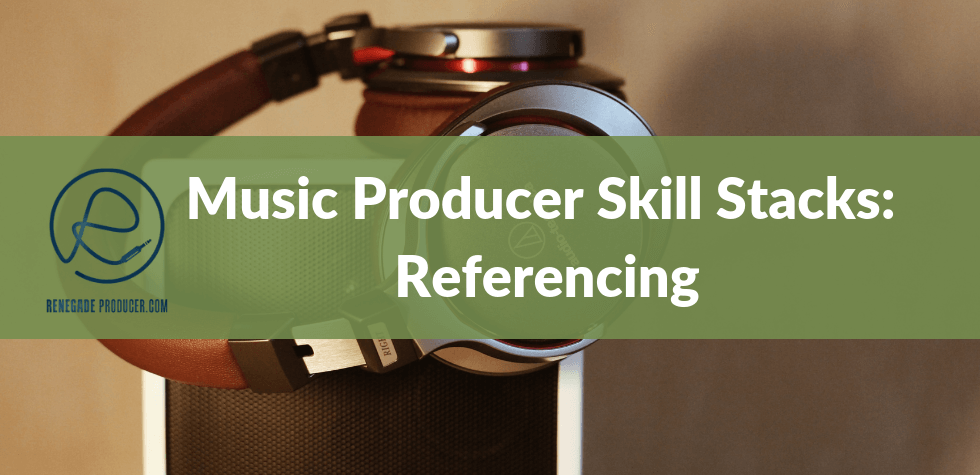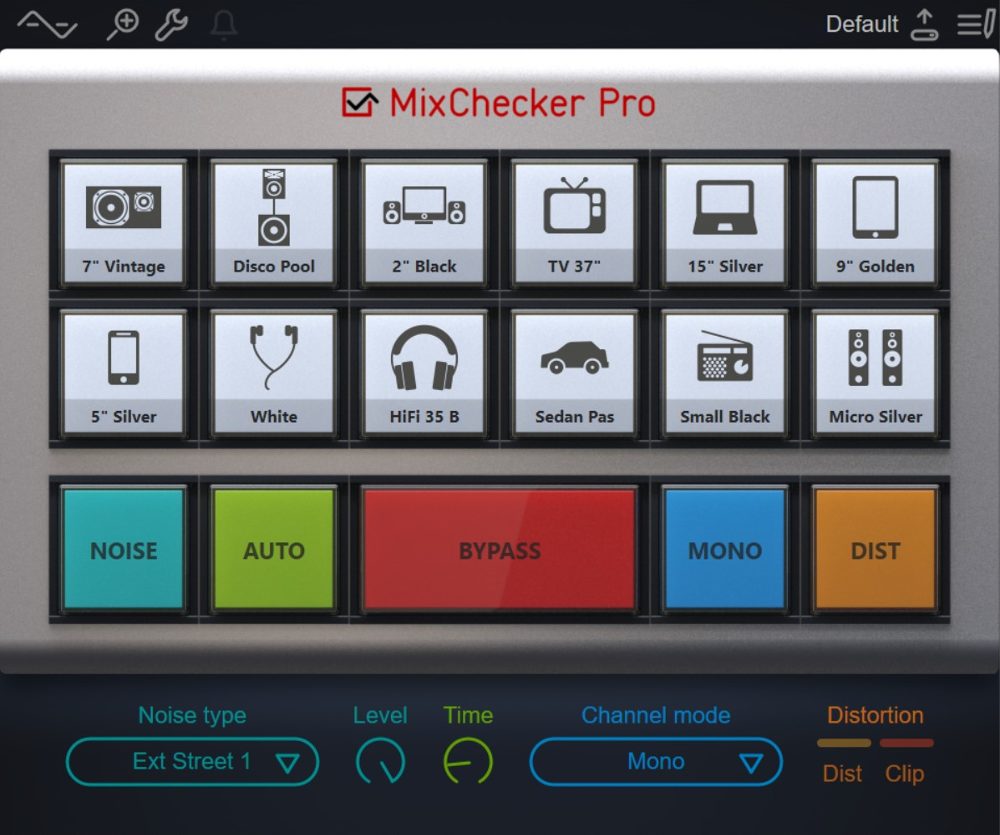25-step music production process checklist and video workshop >>>
How to Do a Mix Check and Reference Your Tracks:

A good final mix check and reference ensures your tracks are fit for purpose and translate well on different playback systems.
Music production has certain limits, mostly determined by the limits of human hearing, studio equipment and digital audio and software. Within those limits it's however all relative. How do you know if your kick is too loud? How can you tell if your mix sounds good? Got the panning right? It's hard to know unless you can compare and contrast.
Context therefore becomes essential, as you can imagine. The way to get context is to reference against what already works, successful similar commercial tracks.
It's also important to mix-check on different playback systems, especially the ones you expect the track to be played back on in most cases.
A 4-Step Mix Check & Reference Process:
1. Mono Check:
Mono playback is less common than it used to be. Most listeners will most likely hear your track in stereo if they are listening with headphones or on stereo systems in their cars or at home. Clubs, public systems and radio alarm clocks will however still play a summed mono version of your track.
Mono compatibility is however not the only or even the most important reason why you want to check your mix in mono.
The way your mix sounds in mono can be a good indicator of the quality of your stereo image. In other words, a solid stereo image will sound pretty decent in mono while a mix with a problematic stereo image will lose a lot when summed to mono.
People who hear your mix on stereo systems, outside of the sweet spot, where they usually are, will be listening to a slightly summed result due to cross-talk from each speaker reaching the other ear.
The main thing you want to check for is phase issues, which become very clear in mono.
It's always a good idea to do a quick mono mix check before your final bounce down, even if you set your balances in mono earlier on in the mix process. So, switch to your mono speaker or switch off one of your stereo monitors and use a plug-in on your master channel or the mono switch on your desk to sum to mono.
Listen to the entire track and make sure nothing disappears or jumps out at you. Pay attention to the relative levels between your instruments.
You don't want to obsess over mono. It's a useful tool to get a different context when you mix check and it helps you spot obvious issues with your stereo image. Your final mix will be a stereo track, so the best way to experience it will always be in the sweet spot on a good stereo system and in a good room. A quick mono check is more than enough.
2. A/B with Reference Tracks:
You want to make sure your track compares well with similar popular commercial mixes.
Loudness is one obvious thing to check but you want to do more.
It's important to match the levels of your reference with your mix, as commercial tracks have been mastered, which means they have been maximized in terms of loudness.
Commercial tracks are mastered, your track is being mixed, so be sure to check that the loudness compares well in terms of RMS levels.
Check the levels of the various main ranges of the frequency spectrum to make sure they sit at roughly the same level as the reference track. Use your ears to make sure the mix compares well with the reference.
You can set up a sub-group (pre-master) for your mix processing so you can route your reference track to the stereo master channel without it going through your mix effects and processing. Alternatively you can make life easier with something like MagicAB or iZotope Ozone.
Check this video to see referencing in action:
3. Different Positions:
Listen to your mix in different positions in your room and even outside your room and make final tweaks to find a good compromise between the various listening positions. This helps you compensate for common monitoring issues you may have due to a not so perfect listening environment, which is often the case in smaller home and bedroom studios.
The above tip comes from Mike Senior's book "Mixing Secrets for the Small Studio". Get the book. It's worth the cost of admission.
4. Different Systems:
Bounce your mix down and listen to it on as many systems as possible.
Most importantly, try to listen to it on a system similar to the systems you're mixing for.
Mix check on headphones, on cheap computer speakers, on your laptop, in your car. Mix check in a club if you have access and you're mixing a track intended for club systems. If you're mixing for the club, then prioritize that reference, but still try to strike a good balance between the different systems.
If you're mixing for clubs or outdoor stages you may find it harder to get access to a system large enough. Even if Dave over at The Lounge lets you test, it'll most likely be to an empty room without a crowd. Still, that's better than not checking on a big rig. So, jump at the chance if you can.
Don't Have Access to Different Systems? Try This Handy Little Hack:
It can be very time consuming to reference on different systems and not always a viable option if you don't have access to a range of playback devices.
That's why MixChecker Pro is such a handy tool to have.
This tool simulates different playback systems and makes it possible for you to reference different systems with the click of a button.
Huge time-saver and way less effort!
Take Rapid Massive Action for the Win:
Apply all 4 the above steps to your next mix.
Continue to do so. That's how you get mixes that translate well!
More Skills for Your Producer Skill-Stack:


Learn to understand equalisers and frequencies to supercharge your mixing skills and get results, fast...

New producer? Learn everything you need to produce your first professional track right now...

Would you like to discover the simplest and easiest way to learn music theory as a music producer?
Share this post. Spread the knowledge so other producers can benefit too:
- Renegade Producer
- Producer Skills
- Mix Check Skill
ⓘ Some pages contain affiliate links so I might earn a commission when you buy through my links. Thanks for your support! Learn more


